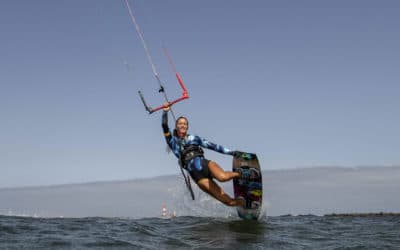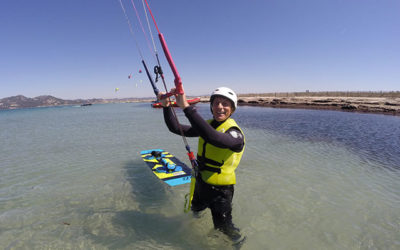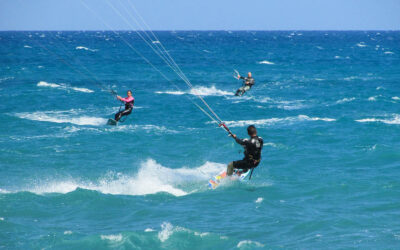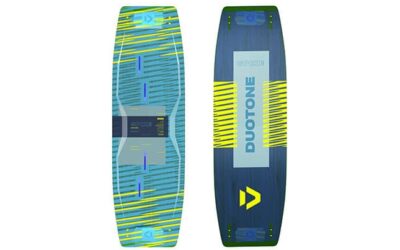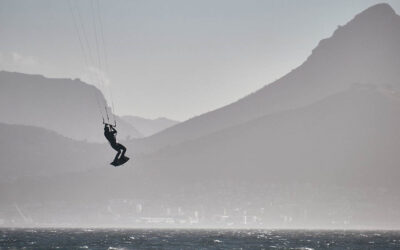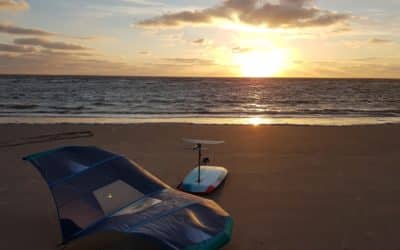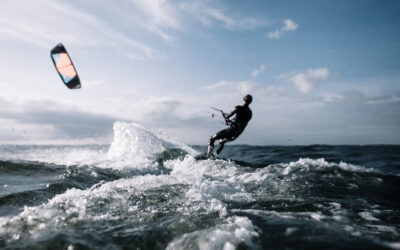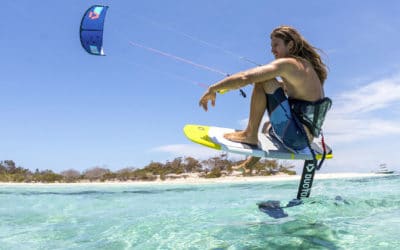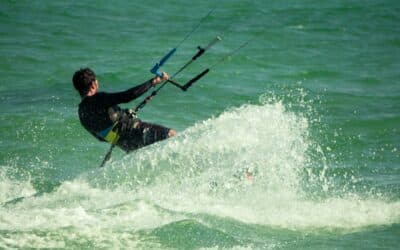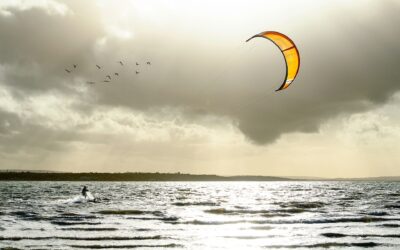How to Start Kitesurfing: a Beginner’s Guide
Ah, kitesurfing! A sport where the sea merges with the sky and you speed along, carried by the wind. Here, on the magnificent beaches of Almanarre in Hyères, Greg and Colin, our two esteemed instructors from KGG school, transform beginners into true kiteboarding aficionados. But before you become a pro at this board sport, let’s dive into the basics of this exhilarating activity together.
Understanding Wind Conditions
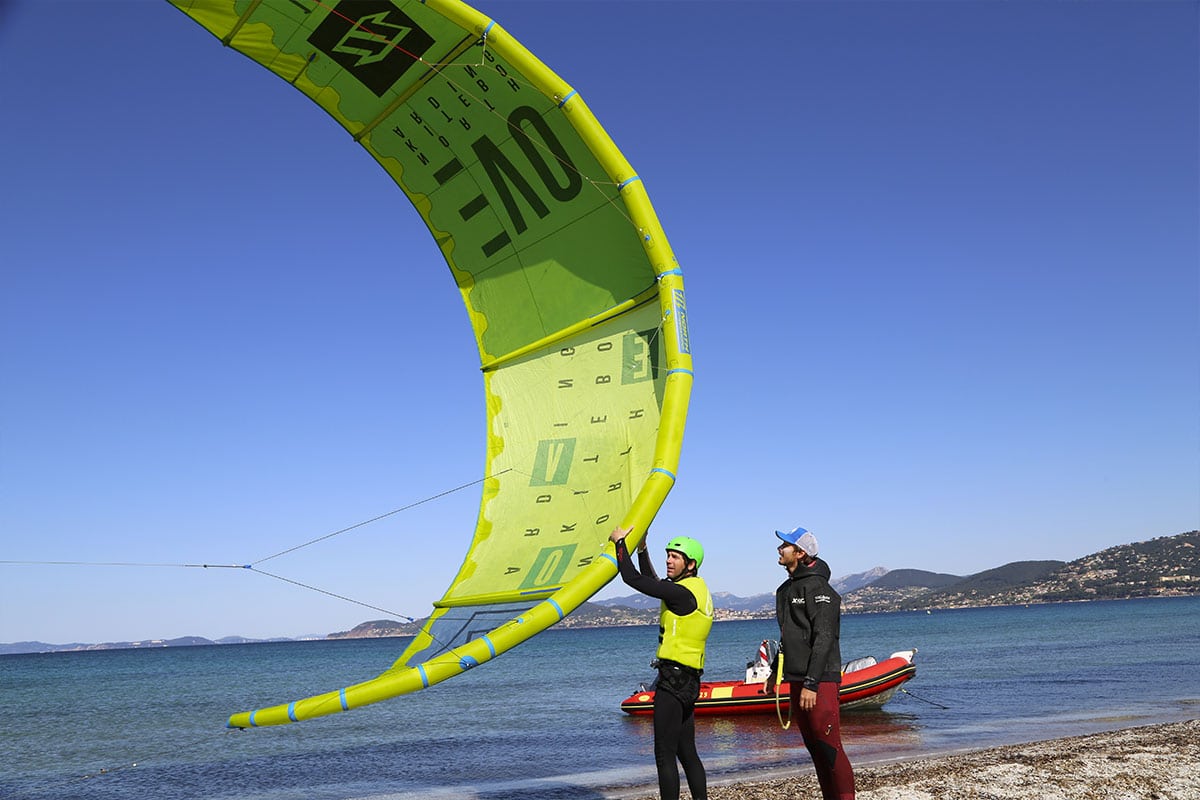 No kitesurfer worth their salt dares to brave the waves without first consulting Mother Nature. Wind conditions are crucial to know if your experience will be smooth sailing or a wild ride. Winds must be sufficiently constant and moderate — neither too weak, as your kite will then become a floating bathtub, nor too strong, at the risk of being catapulted beyond imaginary mountains.
No kitesurfer worth their salt dares to brave the waves without first consulting Mother Nature. Wind conditions are crucial to know if your experience will be smooth sailing or a wild ride. Winds must be sufficiently constant and moderate — neither too weak, as your kite will then become a floating bathtub, nor too strong, at the risk of being catapulted beyond imaginary mountains.
The ideal times to start are often during gentle breezes. At KGG school, Greg and Colin spend as much time checking the wind direction as they do smiling. Generally, winds between 12 and 20 knots are perfect for novices. This range allows for gentle learning, thus avoiding unwanted, erratic jumps.
Optimal Gear Selection
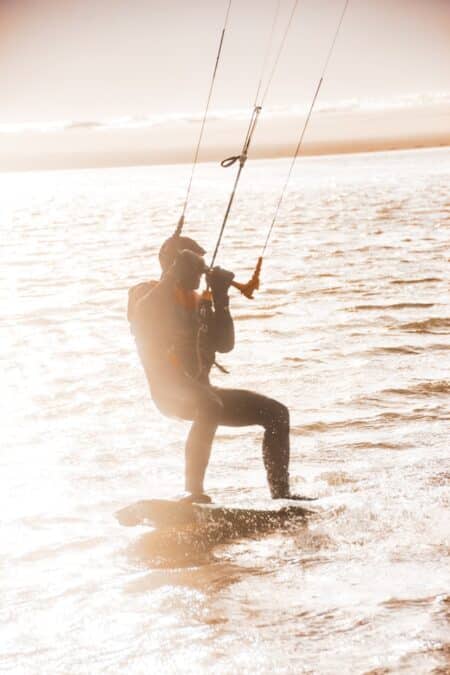
Which type of kite should you choose? Delta kites offer quick relaunch and good depower, which means fewer forced swims. As for size, it essentially depends on your weight and wind conditions. There are even helpful charts where you can find the ideal kite size based on your weight and the day’s wind conditions!
Required Equipment:
- Board: Opt for a wide board for more stability.
- Kite: A delta kite is recommended for beginners.
- Control Bar: Make sure it’s suitable for the chosen kite.
- Harness: A seat harness is generally more comfortable for novices.
The First Step: Taking Kitesurfing Lessons
Dear thrill-seeking reader, please know that self-taught learning is strongly discouraged when it comes to kitesurfing. The ocean can be unpredictable, but it’s also forgiving of human errors. That’s where Greg and Colin come to the rescue: their kitesurfing lessons are designed to instill in you the essential reflexes.
For your first sessions, it’s not just about handling but also understanding kitesurfing safety. How do you react when the kite falls? What’s the best way to relaunch your kite? When should you release? These are all questions whose valuable answers can very well save your session… and sometimes your skin.
Developing your Physical Fitness
Practicing kitesurfing requires a certain level of physical fitness. Don’t be alarmed! You don’t need to be ready for the Boston Marathon. However, basic strength training and endurance will help maximize your experience. Imagine it as a lifetime membership to your personal aquatic gym.
Your arms, core, and legs work intensely. So if you dream of gliding like a sea butterfly, start with a few simple exercises: squats, push-ups, and let’s not forget those famously essential planks for any boarder facing the ocean.
Some Useful Exercises:
- Squats: Increases quadriceps power to maintain the correct position on the board.
- Push-ups: Strengthens arms and upper body to manage the control bar.
- Plank: Works the core, essential for staying balanced and strong during radical turns.
Safety First
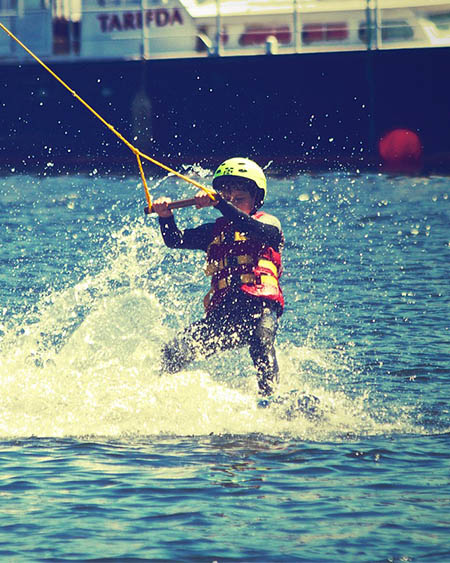
Learning gestures and understanding international hand signals are an essential part of the curriculum taught by our certified experts from Almanarre. These indications allow you to signal to other practitioners or navigators if everything is okay… or if you need a much-needed coffee break after a comical fall.
Practical Tips for Kitesurfing Beginners
Without wanting to sound like a strict referee, here are some insights to help you fine-tune your beginnings. First, “avoid seeking perfection in strong winds: you risk experiencing that embarrassing moment where you trample your own kite like a clumsy creature.”
Take the time to understand the hidden dynamics behind this wind dance by gradually managing your risk-taking. Because yes, kitesurfing is above all about a harmonious relationship where water and air readily respond to patient minds.
For those who wish to start their adventure safely and benefit from professional guidance, consider participating in a beginner kitesurfing course in Hyères. This will offer you a solid foundation to progress confidently.
Additional Tips:
- Observing other kitesurfers can offer surprisingly instructive practical insights.
- Choose a beginner-friendly spot with consistent wind intensity.
Frequently Asked Questions about Kitesurfing
What are the ideal wind conditions for starting kitesurfing?
Ideally, novices should look for consistent winds between 12 and 20 knots. This offers a good balance for those who want to learn without too much difficulty. At Almanarre, in particular, the wind conditions are often suitable for safe learning.
What type of equipment is recommended for kitesurfing beginners?
A delta-type kite with good depower capability is ideal. Also opt for a wide board that provides more stability. Finally, the seat harness is often preferred for starting comfortably and safely.
What is the importance of physical fitness in kitesurfing?
“Endurance and physical strength greatly facilitate learning kitesurfing. Strengthening your arms, legs, and core improves control on the water, thus reducing fatigue and promoting an enjoyable experience.”
Why is it recommended to take lessons before going kitesurfing alone?
Attention, self-learners! Prudence dictates that learning should be done under supervision to integrate the fundamentals, reduce the risk of injuries, and understand sea safety principles. Greg and Colin are eager to share their passion with you, with proper guidance.
Search
Catégories
Recent Posts
Suivez-nous !

